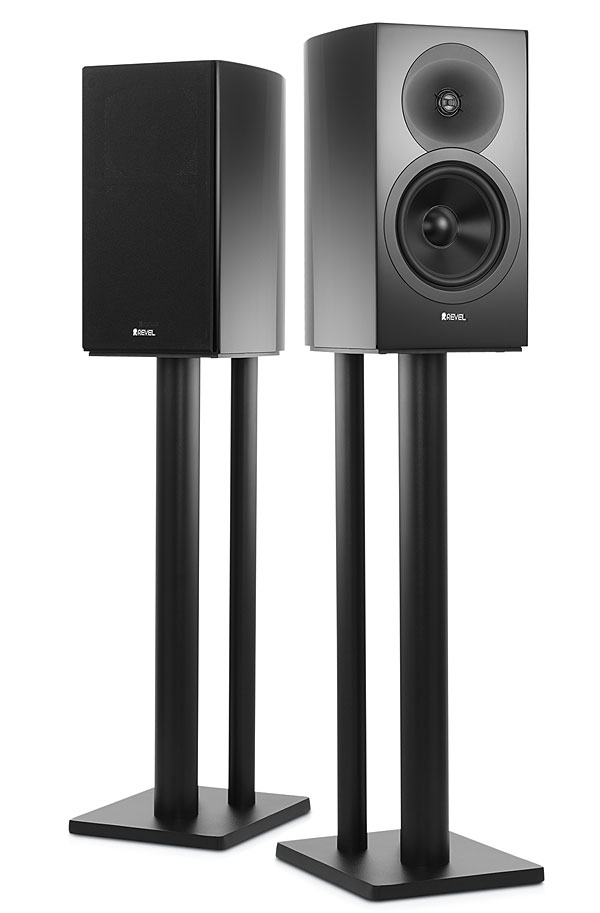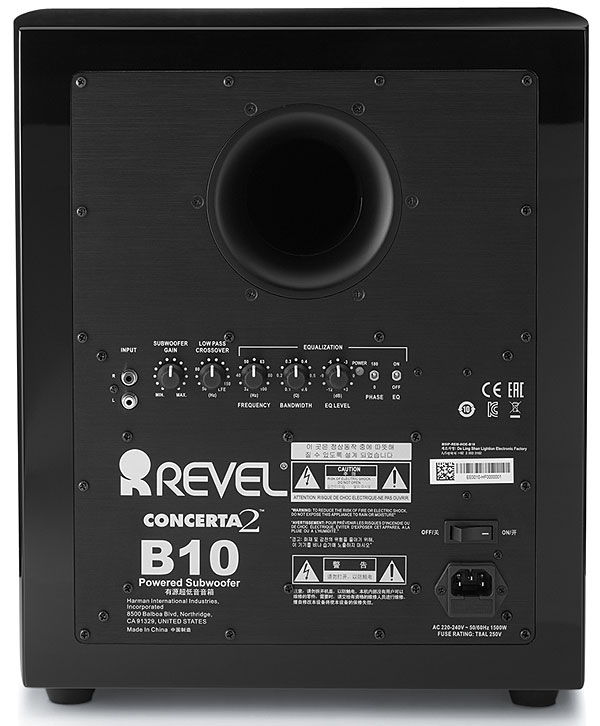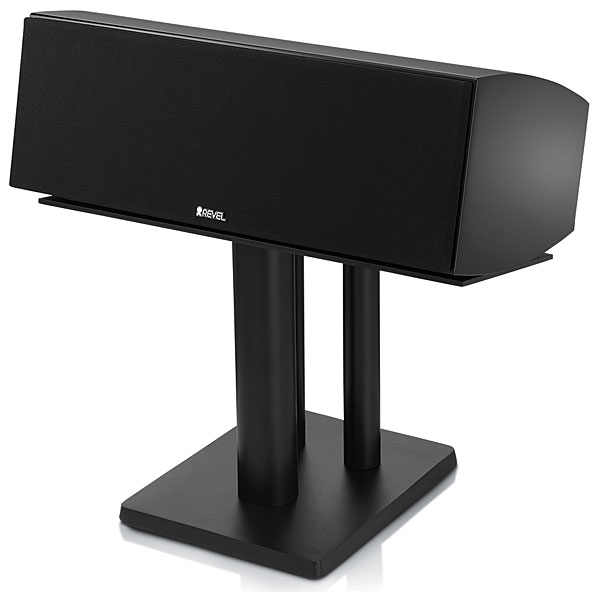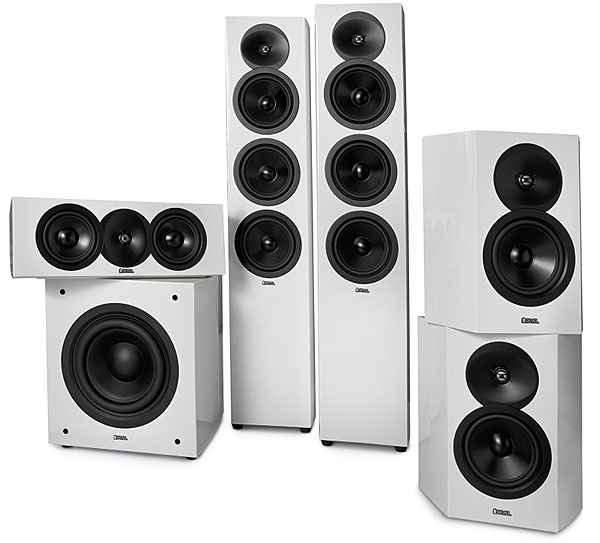Revel Concerta2 M16 Speaker System Review Page 2
I set up the sub using an old kit from Infinity, another Harman brand. The R.A.B.O.S. (Room Adaptive Bass Optimization System) kit includes a sound-pressure-level meter optimized for bass, a test-tone CD, and a protractor for the bandwidth setting. Having previously used R.A.B.O.S. with two different subs, I knew that my room has not one but two bass peaks. This pattern held true with the Revel B10, so the resulting EQ settings were just approximate, with frequency and level settings aimed at the larger peak, and with bandwidth embracing both peaks. Still, the improvement was easy to hear. While the R.A.B.O.S. kit is no longer available, you could analyze your room’s bass character with a test disc, reliable mic, and software-based spectrum analyzer.
Associated equipment included a Denon AVR-X7200W A/V receiver, Oppo BDP-83SE universal disc player, Micro Seiki BL-51 turntable, Shure M97xE cartridge, and Denon PRA-S10 serving as phono preamp. All movie demos were on Blu-ray.

Believable
Based on Revel’s reputation and my dimly remembered past experience, I expected a tidy, well-rounded sound free of gross flaws. What I wasn’t prepared for was the huge soundfield, dynamic fluidity, timbral credibility, and effortless suspension of disbelief. Except for a brief brashness during break-in, the top end was utterly revealing, with a chameleon midrange that didn’t impose any particular coloration. In either surround or stereo, the soundfield was notably deep and un-speaker-bound, with content bursting out of the speakers as if it had a mind of its own. The equalized sub sounded more powerful than a garden-variety model of equivalent size.
Jack Reacher: Never Go Back (Dolby Atmos) offers the cornucopia of aggressive bass effects you’d expect in a Tom Cruise movie, and I used the first half-hour to fine-tune the sub. The bass billowed more than I’d expected, largely because I had initially dialed in a lower EQ level setting than R.A.B.O.S. recommended. Increasing EQ level and backing off the overall sub volume by just a hair shaped the bass into ideal proportions. It was not only better than I’d get from an untreated sub, but better than I’d get from an A/V receiver with average full-band room correction. It goes without saying that a system of this quality aced the essentials of vocal reproduction—with natural timbres and no booming of male voices out of the sub, either before or after sub tweaking. Comfort level in numerous action scenes was high, even during a clattery kitchen fight, thanks more to the system’s excellent dynamic capabilities than to any euphonic attenuation of the top end.
The Accountant (DTS-HD Master Audio) is rich in ballistics, something I abhor in daily life but enjoy in fictional film when it’s reproduced so well. Ben Affleck’s action-man accountant is a marksman, among other talents, and early outdoor target-shooting scenes resounded impressively, showing off the system’s ability to produce a large and realistic soundfield with strong dynamics and complex decays. In a later scene, when he launches an assault on the occupants of a house from outside, the perspective of those under attack—with a combination of distant shots and close-up smasheroos—seemed both dramatic and authentic.

Although not as bombastic, Moonlight (DTS-HD Master Audio) offers quiet moments that showed off the system’s low-level resolution, including two pivotal scenes set at the beach against the soft murmur of the ocean. At the other end of the dynamic scale, a sudden eruption of hip-hop showcased the system’s bass response and its ability to handle a monster beat.
Even Better Loud
I’ve always listened to Jorma Kaukonen’s River of Time (CD) at low to moderate volumes, thinking they were best suited to the gentle congress of acoustic instruments and Jorma’s thoughtful, reflective vocals. But something made me turn it up several times. I wanted to hear more of the evenly proportioned string bass (thanks, Revel and R.A.B.O.S.), more of the natural texture of other stringed instruments, more of the soft exhalation of distantly miked cymbals, and especially more of that deep, un-speaker-bound soundstage. Usually, there’s a tradeoff between volume and listening comfort, and any speaker can be forced into an uncomfortable sense of straining and even gross distortion at high volumes—but I never got to that point with the Concerta2 in my listening room. Good output capabilities and high resolution are an attractive combination.

Which Mahavishnu Orchestra LP should I play? The Revels flattered both the warmth and the punchiness of The Inner Mounting Flame. Producer George Martin and engineer Geoff Emerick’s adroit integration of band and (real) orchestra in Apocalypse never sounded better. But the most compelling one was the live album Between Nothingness & Eternity, with shimmering, half-submerged crowd noise from the Central Park audience and scorching—yet luminously listenable—exchanges between John McLaughlin’s guitar and Jan Hammer’s Moog.
Some say many London Phase 4 Stereo LPs are close-miked and bright, so I was curious to hear what the M16’s expressive top end would do for Pictures at an Exhibition, with Leopold Stokowski leading the New Philharmonia in his own orchestration of Mussorgsky’s piano suite. It was close-miked, yes, but as reproduced by the M16s it was close-miked and vibrant. I liked the upfront presentation of the strings because it brought out the distinctiveness of Stokowski’s free-bowing technique, which encouraged the players to achieve a fuller sound by avoiding lockstep movements. The stereo SACD of Bernard Herrmann: The Film Scores, with Esa-Pekka Salonen and the Los Angeles Philharmonic, provided an almost shocking contrast, with vastly greater spatial information that once again showcased the monitor’s tremendously deep soundstage.

And with that equalized sub in the system, I had to play my favorite pipe-organ classics: E. Power Biggs performing Bach’s Toccata and Fugue in D minor and Passacaglia and Fugue in C minor. The 10-inch sub didn’t rattle the windows, but it did reach down to hit all the bass-pedal notes pretty evenly.
The Revel Concerta2 is a reasonably priced speaker line that consistently delivers impeccable highend sound, as Revel has done as a brand throughout its history. The B10 sub isn’t cheap, but nor would I call it overpriced, considering what it offers. I’m especially impressed that the M16 monitor provides so much transparency, refinement, and neutrality for well under $1,000 per pair. In fact, I came to trust and enjoy the monitor so much, I might have adopted it as my new reference speaker—replacing the Paradigm Studio 20 v.4, which is now a decade old and lacks top-firing drivers to support Dolby Atmos and DTS:X. Unfortunately, the otherwise sterling M16 doesn’t have Atmos-enabled drivers either, so the (still quite wonderful) Paradigms get to live another day. But the Concerta2 made an unforgettable and overwhelmingly positive impression as a speaker system that does it all, and does it well nigh perfectly.





























































